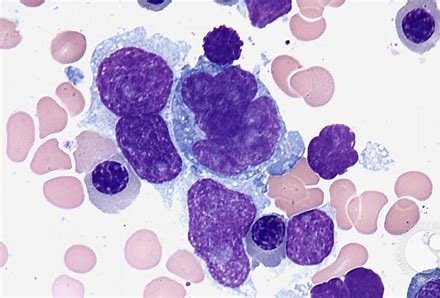JW Therapeutics Starts Clinical Trial of Carteyva® for High-Risk Large B-Cell Lymphoma
09 March 2023 | Thursday | News

Image Source : Public Domain
High-risk large B-cell lymphoma includes large B-cell lymphoma with International Prognostic Index (IPI) score ≥3, and high-grade B-cell lymphoma (HGBL) with MYC and BCL2 and/or BCL6 translocations (double-/triple-hit lymphomas; DHL/THL). Patients with high-risk large B-cell lymphoma (IPI≥3) have a low response to standard first-line chemotherapy, with complete response rate (CRR) 47.3%, 3-year overall survival (OS) rate 58.9% and progression-free survival (PFS) rate 40.7%. HGBL patients with MYC and BCL2 and/or BCL6 translocations (DHL/THL) tend to have poor prognostic indicators (e.g. bone marrow involvement, central nervous system (CNS) involvement, and elevated lactate dehydrogenase) and no recommended standard first-line therapies, with poor efficacy (CRR 59.6%) to traditional standard first-line R-CHOP chemotherapy. CRR of these patients remains <60% when treated with DA-EPOCH-R therapy and there is no significant survival benefit with the more aggressive induction regimen compared with standard R-CHOP. Therefore, there are substantial unmet clinical needs in the first-line treatment of high-risk large B-cell lymphoma patients, and new treatment options are urgently needed.
In its pivotal clinical study (RELIANCE study), Carteyva® has demonstrated manageable safety profiles and high efficacy in patients with relapsed/refractory large B-cell lymphoma who have received at least two lines of therapies. The encouraging results have inspired CAR-T therapy destined for earlier lines of therapies in high-risk large B-cell lymphoma.
The study is an open-label, single-arm, multicenter, and investigator-initiated trial (IIT) in China, aiming to evaluate the efficacy and safety of Carteyva® as first-line therapy in adult subjects with high-risk large B-cell lymphoma.
Most Read
- How Health Systems Are Reshaping Drug Adoption, Partner Models, and Market Access in 2026
- Top 25 Biotech Innovations Redefining Health And Planet In 2025
- The New AI Gold Rush: Western Pharma’s Billion-Dollar Bet on Chinese Biotech
- Top 25 Biotech & Biopharma Leaders in Sustainable Innovation, 2025
- China’s Biopharma Dealmaking Surges in H1 2025, Driven by Record Licensing and Oncology Focus
- Chikungunya in China: How a “Forgotten” Arbovirus Found the Perfect Storm
- How Innovation Gaps in Biopharma Raise New Safety Concerns
- Smart Implants and the Future of Musculoskeletal Injury Treatment
- How Ethical Gaps in Psychiatry Could Undermine Biopharma Progress
- The Evolving Landscape of Women’s Health Innovation in the Asia-Pacific
- Using NLP-Driven Decision Support in Emergency Health Assistance
- Taiwan Steps Into the Global Spotlight With a New Cancer Therapy
- The Role of Unique Device Identification (UDI) in Tracing Medical Device Safety
- The Importance of a Patient’s Mental Health During Clinical Trials
Bio Jobs
- The State of Biotech and Life Science Jobs in Asia Pacific – 2025
- Avantor’s New CEO Ligner Aims to Unlock Global Potential and Deliver Shareholder Value
- AstraZeneca Commits $50 Billion to U.S. Expansion by 2030 in Biggest-Ever Global Investment
- Thermo Fisher, SAMRC, and South Africa’s Department of Science and Innovation Launch CATIR to Nurture Next-Gen Scientists
- Cube Biotech Appoints Former Sartorius CEO Dr. Joachim Kreuzburg to Board of Directors
- FDA’s AI Transition Marks a Turning Point in Drug Review: Industry Faces Pressure to Adapt Amid 20% Workforce Cut
- WuXi XDC Completes Mechanical Build of Singapore Bioconjugate Manufacturing Hub
News
Editor Picks











